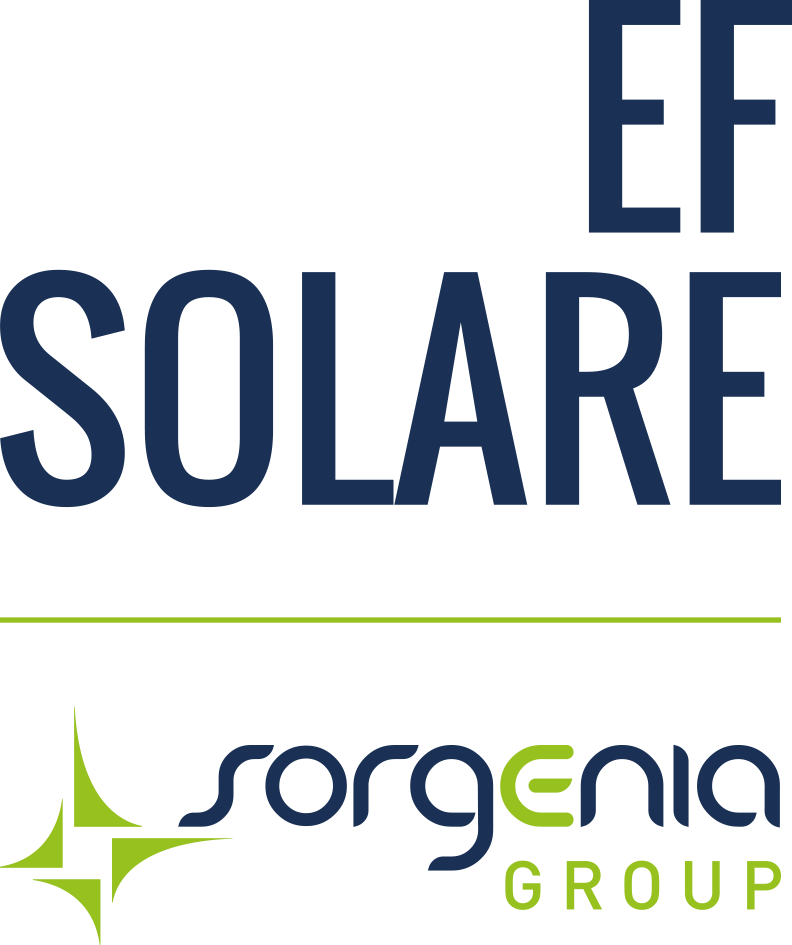Inverter Retrofit Plan
EF Solare Italia extends the lifespan of over 180 photovoltaic plants
Inverters are among the most delicate components of photovoltaic systems: constantly subjected to stress, they may experience performance loss over time. This is why EF Solare Italia has implemented a strategic retrofit plan for its key plants, turning maintenance into an opportunity for efficiency and innovation. The result? Stronger, more resilient, and more circular assets.
Inverter retrofit: benefits and strategy
Extending the life of photovoltaic plants, improving long-term performance, containing operational costs, and reducing environmental impact: these are the key outcomes achieved by EF Solare Italia through its inverter retrofit plan – a five-year project involving over 180 strategic plants, totaling approximately 550 MWp of installed capacity. The retrofit program is part of the Group’s broader asset renewal strategy pursued in recent years.
Inverters are particularly sensitive components: exposed to thermal stress and constant strain, they naturally become obsolete over time, which can compromise availability and production continuity. To address this challenge, EF Solare Italia chose a targeted approach for most of its portfolio, investing in regeneration and extraordinary maintenance instead of full equipment replacement.
The retrofit work focused on replacing the most stressed internal components—such as capacitors, IGBTs, electronic boards, and ventilation systems—paired with preventive maintenance and firmware updates. The effectiveness of the plan is evident from the data collected: there has been a significant reduction in downtime (BI – Business Interruption) and an increase in the mean time between failures (MTBF), positively impacting both operational continuity and maintenance costs. In many cases, severe failures that had previously required full inverter replacement no longer occurred.

In addition to operational benefits, the plan has generated measurable environmental advantages. On average, in an inverter weighing around 2,000 kg, only about 50 kg of components are actually replaced—meaning that over 95% of the material is reused. This choice avoids the need to manufacture and transport new inverters, reducing electronic waste and overall environmental impact.
Insights from our experts
“Retrofit has become a structural approach for us. It allows us to maintain high operational performance, extend the life of our plants, and reduce our environmental footprint—contributing to a more efficient and sustainable portfolio management. In recent years, we have worked to strengthen our in-house expertise so we can manage activities directly, defining specific technical specifications and clear operational plans for each technology,” said Davide Cavallotti, Technical Asset Manager at EF Solare Italia.
“This has also profoundly changed our relationship with suppliers, who now work in full integration with our technical, HSE, and operational teams. Furthermore, we also organize construction sites by taking seasonal production peaks into account, scheduling work in the evening or at night to minimize the impact on yields. It’s a team effort that allows us to be faster and more effective. Retrofit is a tangible example of how maintenance can become a driver of innovation and long-term value,” added Antonio Costantino, Technical Asset Manager at EF Solare Italia.
Throughout the project, EF Solare Italia established a detailed control system for every phase: daily monitoring through digital systems, weekly on-site inspections to assess technical progress and safety, and dedicated operational guidelines to mitigate risks related to lifting heavy components. With this approach, EF Solare Italia has turned a maintenance activity into an opportunity for efficiency and innovation, helping to make its photovoltaic infrastructure stronger and more resilient.

